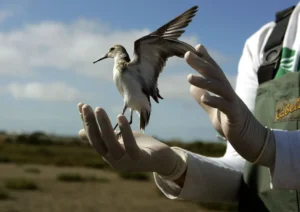First Severe Bird Flu Case in the U.S. Sparks National Alarm!
The U.S. Centers for Disease Control and Prevention (CDC) reported the first case of bird flu in the U.S. linked to a backyard flock.
A patient in Louisiana has been hospitalized with a severe case of avian influenza A(H5N1). The CDC confirmed the virus on December 13, 2024.

An investigation is being done to find out how the person got infected. It’s confirmed they had contact with sick and dead birds in a backyard flock. This is the first U.S. case of bird flu connected to backyard flocks.
There have also been 37 cases tied to dairy herds, 21 linked to poultry farms, and 2 cases with unknown sources of exposure.
Genomic analysis showed the Louisiana case is linked to the D1.1 virus type, seen in wild birds, poultry, and some human cases in the U.S. and Canada. This differs from the B3.13 virus type found in dairy cows and some other cases. The CDC is studying the virus further.
Severe cases of H5N1 are rare but not unusual. The virus has caused serious illness in other countries, but there’s no proof of person-to-person spread. The CDC says the public health risk remains low.

California Governor Gavin Newsom declared a State of Emergency to handle the outbreak after cases appeared in dairy cows in Southern California.
Since its first detection in Texas and Kansas on March 25, 2024, the virus has spread to 16 states. Bird flu was first seen in U.S. wild birds in South Carolina in January 2022, and later in California in July 2022.
The virus outbreak in dairy cows prompted close monitoring by the California Department of Food and Agriculture (CDFA). So far, 61 human cases have been confirmed across seven states, with 34 in California.
Governor Newsom said the emergency declaration allows for faster action, such as hiring staff and improving containment measures. He assured the public that California has the most extensive testing and monitoring system in the country.

Newsom stated, “We are committed to protecting public health, supporting agriculture, and giving Californians accurate information.”
To reduce exposure risks, people are advised to avoid contact with sick or dead birds, poultry, or animals. If contact is necessary, personal protective equipment (PPE) like gloves, goggles, and N95 masks should be used.
Cooking poultry, eggs, and meat thoroughly and consuming pasteurized dairy products can help prevent infection.

Anyone exposed to infected animals should watch for symptoms like respiratory problems or eye redness for 10 days and seek medical care if symptoms develop.
For poultry and livestock workers, employers should update health and safety plans, assess risks, and follow proper hygiene and safety measures.
Providing PPE to workers handling infected animals can significantly reduce the spread of bird flu. By following these steps, H5N1 risks can be minimized.
